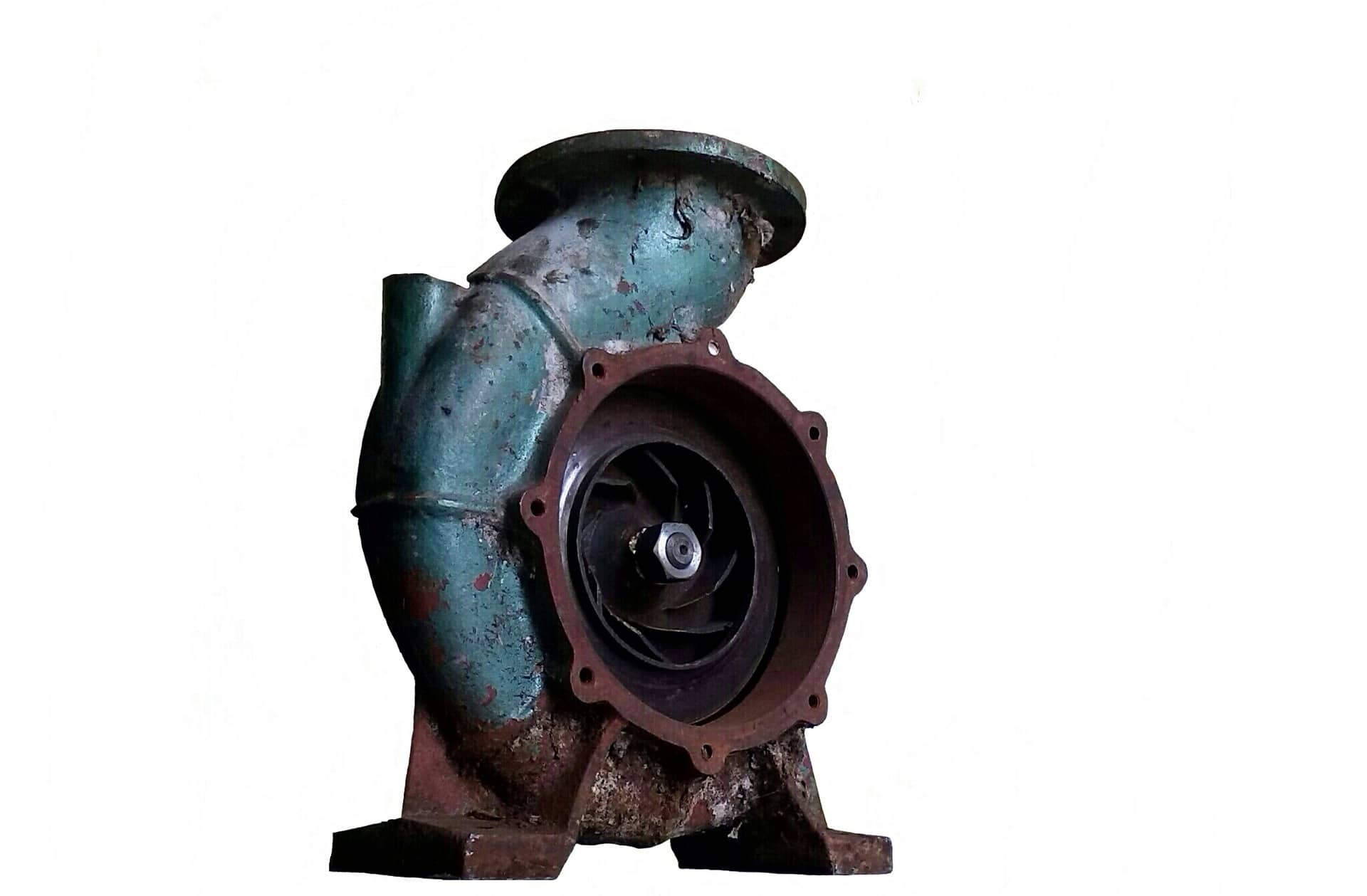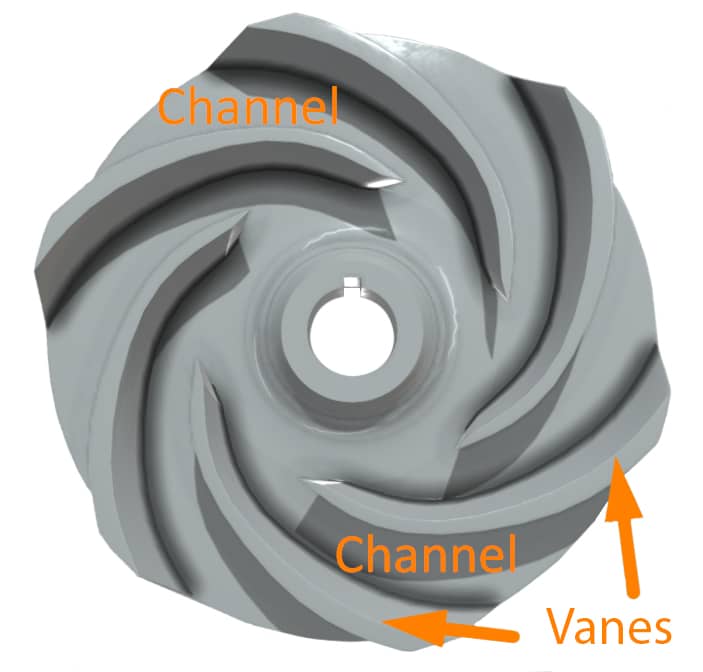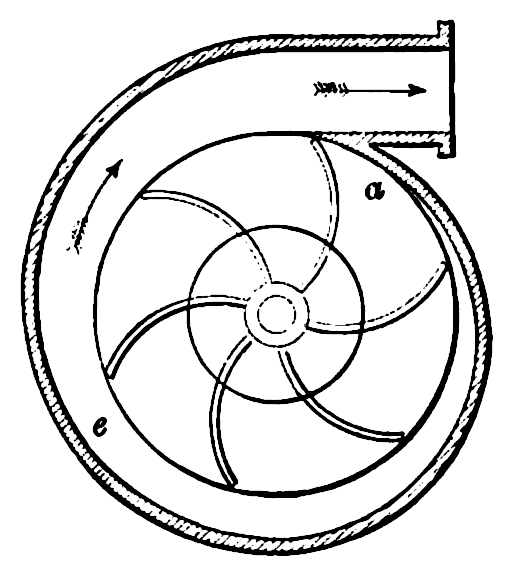Introduction to Centrifugal Pump Open Impellers
Open-impellers are utilized within radial flow centrifugal pumps. This type of impeller is very well suited to handling slurries and other liquids with a high amount of suspended bodies e.g. sewage.

Radial Flow Centrifugal Pump
Advantages of Open Impellers
The largest advantage with an open-impeller is that it does not block easily, as there are no areas with small clearances.
Disadvantages Against Closed Impellers
Compared to the semi-open and closed-impellers, open-impellers are very inefficient as the flow is not guided between the impeller vanes.
The impeller vanes must be quite thick in order that they do not break or bend during operation, this leads to a reduced flow path and thus a reduction inefficiency.
Open impellers do not have any shrouds and are thus structurally quite weak.
Adequate space between the impeller and casing must be maintained in order to avoid damaging the impeller or casing. The gap between the impeller and casing represents a leakage path from the discharge to suction side and leads to a drop inefficiency.
Enjoying this article? Then be sure to check out our Centrifugal Pump Video Course! The course has a quiz, handbook, and you will receive a certificate when you finish the course. Enjoy!
How Impellers Work Inside Centrifugal Pumps
The below video is an extract from our Introduction to Centrifugal Pumps Online Video Course.
Bernoulli's principle states that if a steady flow is exposed to a change in area, then the pressure and velocity will change correspondingly.
Example 1
If a pipe diameter increases, the pressure will increase, but the velocity will decrease.
Example 2
If a pipe diameter decreases, the pressure will decrease, but the velocity will increase.
Impellers are designed based upon Bernoulli's principle and the relationships between area, pressure and velocity.
Flow through the impeller vanes is radial. The impeller creates a negative pressure at the impeller eye (centre of the impeller) and this negative pressure draws liquid into the impeller. The liquid is thrown outwards radially due to the centrifugal force imparted onto it from the impeller. As the liquid flows through the vanes, the flow path area increases and there is a velocity decrease and a pressure increase.

Semi-Open Impeller
Notice on the above image that the distance between the channels (area between vanes) gradually increases as the vanes stretch towards the outer periphery. This gradual increase in area gives a gradual decrease in velocity and increase in pressure. The purpose of a volute casing and diffuser is to continue this velocity to pressure change in order to maximize the pressure and reduce the velocity as much as possible.

Impeller Surrounded by Volute Casing
Additional Resources
https://pumpbiz.com/blog/cat/pump-mentenance/post/right-centrifugal-pump-impeller-three-type/
https://www.rotechpumps.com/impeller-the-soul-of-the-centrifugal-pump
